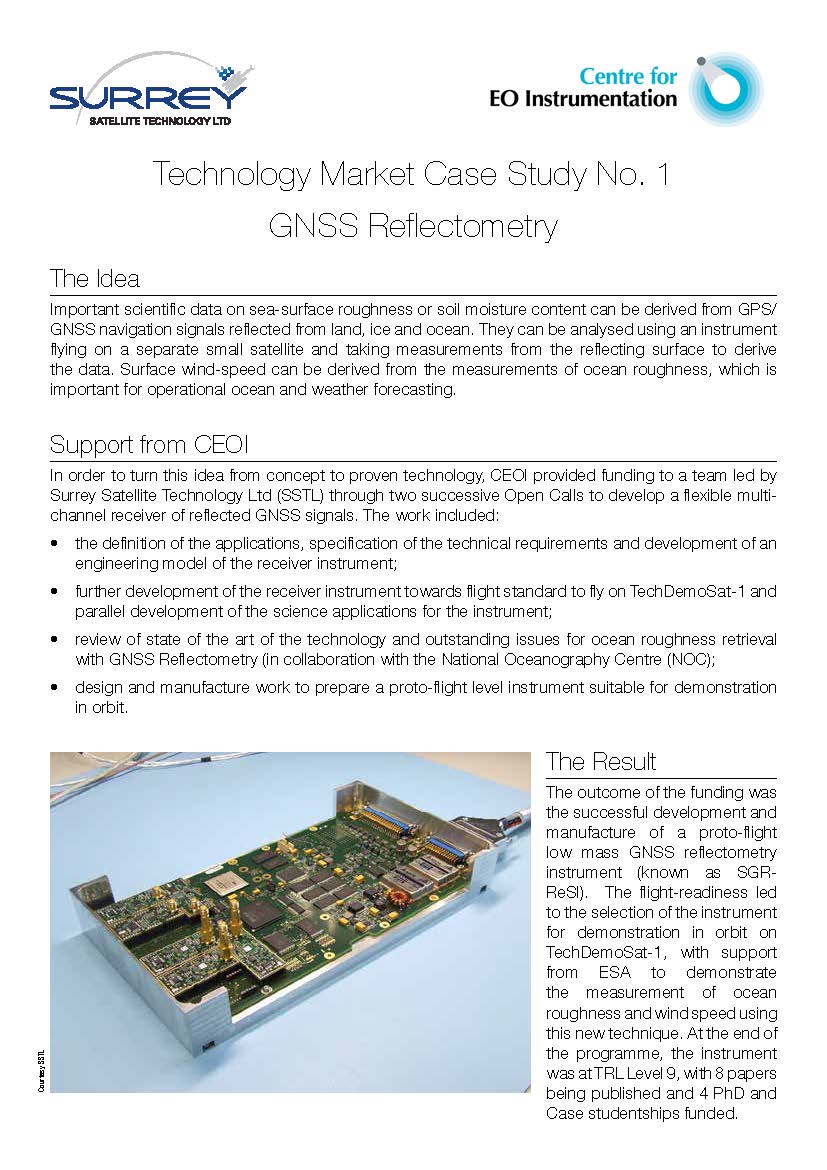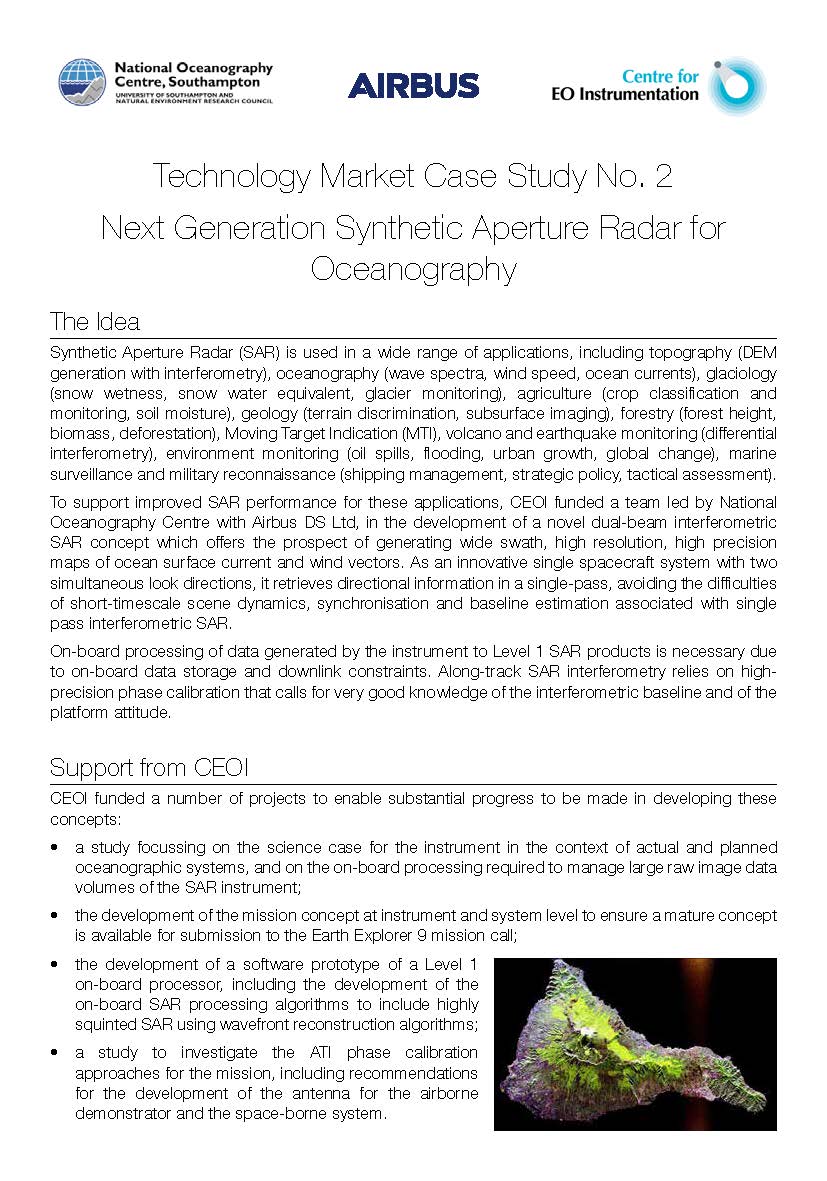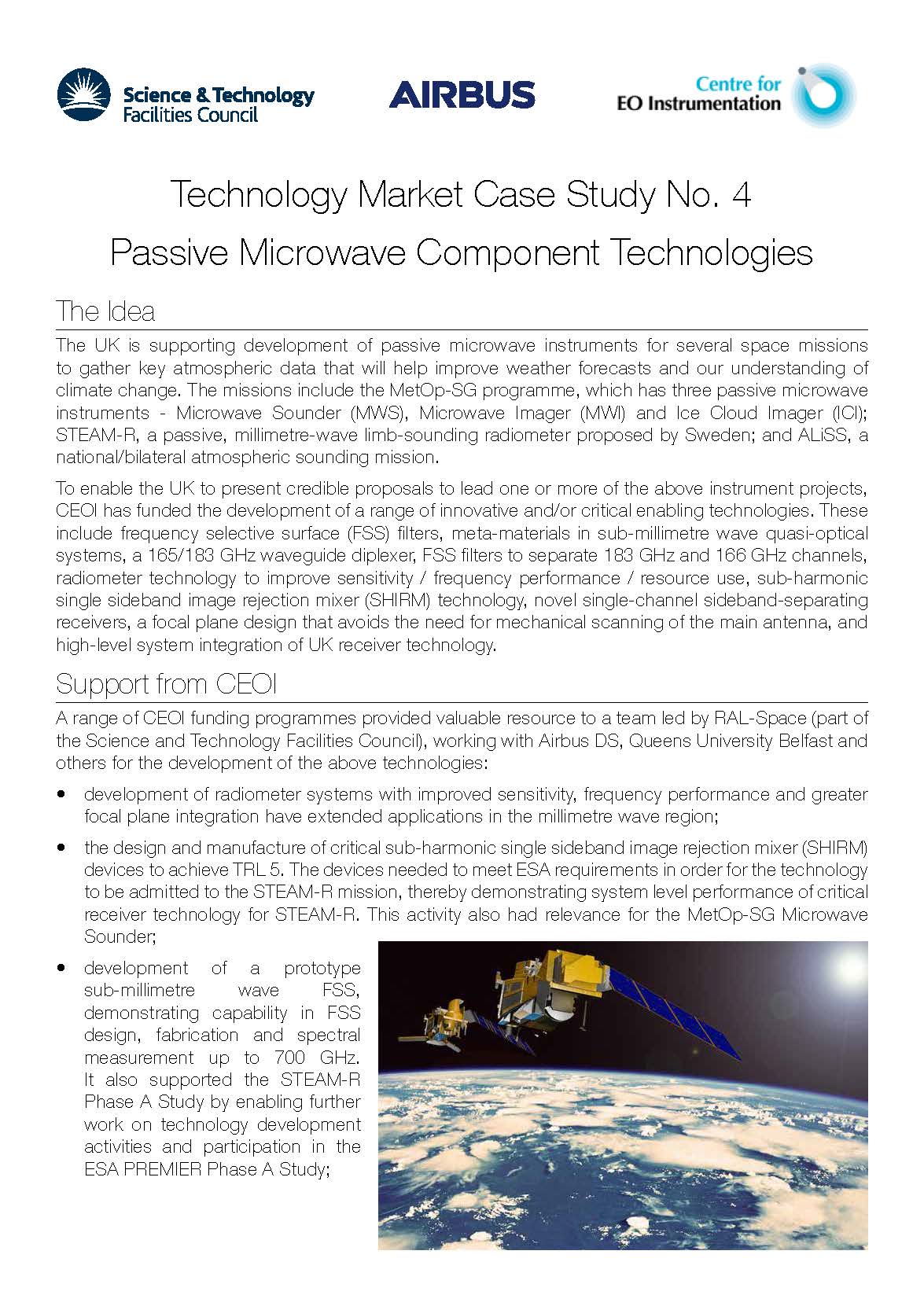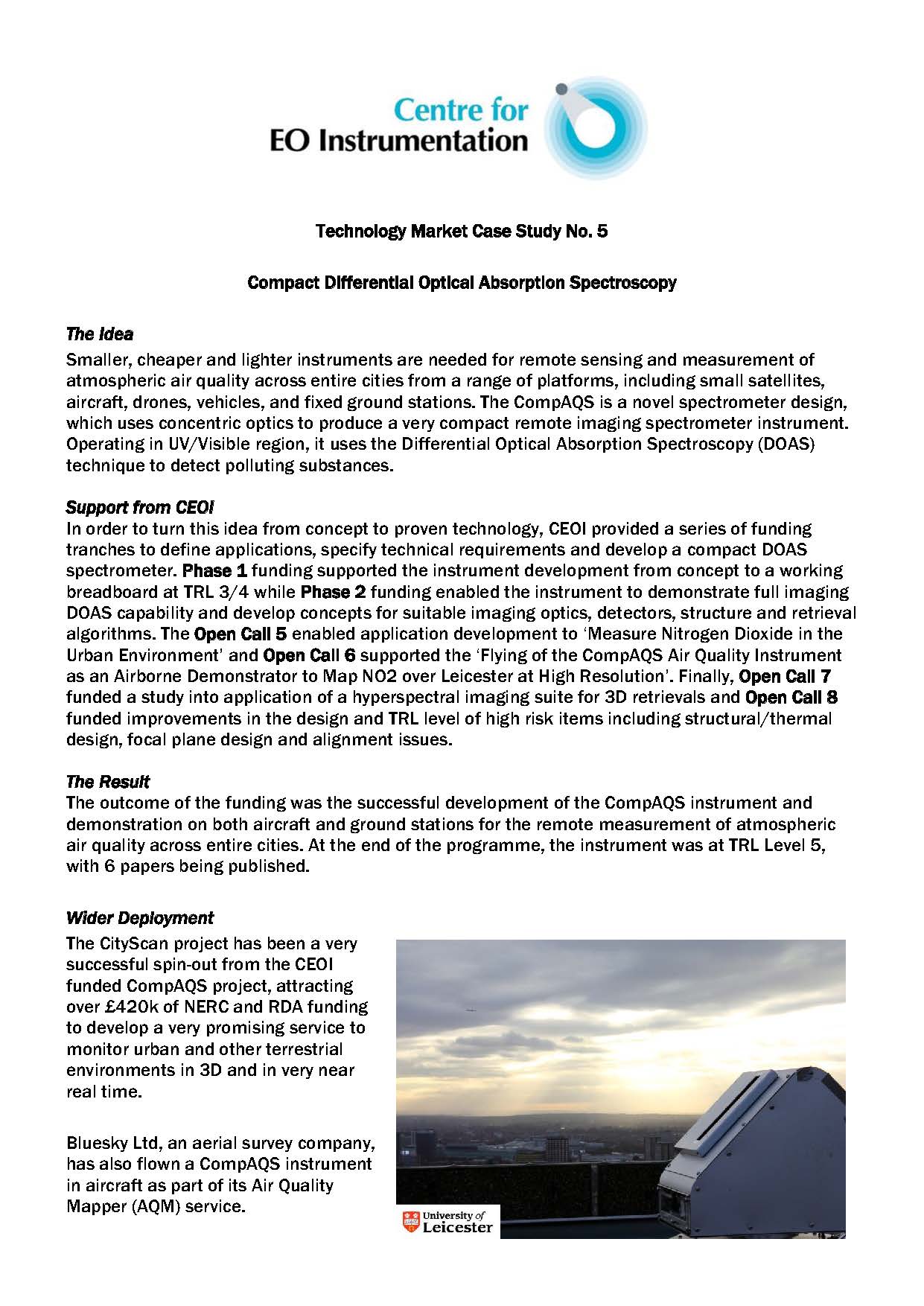Over the lifetime of the programme, CEOI has funded a wide range of technology development projects, the majority of which have led to instruments which are now flying or scheduled to fly in satellite missions. These have been summarised in the figure below:
Many of these projects have been summarised as a Case Study and you can find out more by clicking on the links below:
- BABEL – A Novel Microwave Geolocation System for Earth Observation Applications. Team led by In-Space Missions Ltd
- HYMS – Hyperspectral Microwave Sounder for Spaceborne Earth Observation. Team led by STFC RAL Space. Partners: STAR-Dundee Ltd and JCR Systems.
- GRaCE: G-band Radar for Cloud Evaluation. Team led by STFC RAL Space. Partners: Thomas Keating Ltd, University of Leicester and University of St Andrews
- The Compact Infrared Imager and Radiometer (CIIR). Team led by University of Oxford. Partners: RALSpace and Clyde Space
- Traceable Radiometry Underpinning Terrestrial- and Helio- Studies (TRUTHS). Team led by NPL. Partners: Surrey Satellite Technology Ltd, Airbus DS, STFC RAL, Imperial College London & University of Reading
- GNSS Reflectometry. Team led by Surrey Satellite Technology Ltd (SSTL)
- Next Generation Synthetic Aperture Radar for Oceanography. Team led by National Oceanography Centre with Airbus DS Ltd
- Laser Heterodyne Radiometer. Team led by RAL-Space (part of the Science and Technology Facilities Council)
- Passive Microwave Component Technologies. Team led by RAL-Space (part of the Science and Technology Facilities Council), working with Airbus DS, Queens University Belfast and others
- Compact Differential Optical Absorption Spectroscopy. Team led by University of Leicester, working with Surrey Satellite Technology Ltd.
- Terahertz Multichannel Radiometer Using Stabilised 3.5-THz Quantum-Cascade Laser Local Oscillators and Schottky Diode Technology. Team led by the University of Leeds.
- OVERPaSS: On-board VidEo Rapid ProceSSing. Team led by Earth-i Ltd
- Phase Change Cells for Next Generation InfraRed Calibration Sources (NGenIRS). Team led by RAL-Space working with Surrey NanoSystems and National Physical Laboratory








